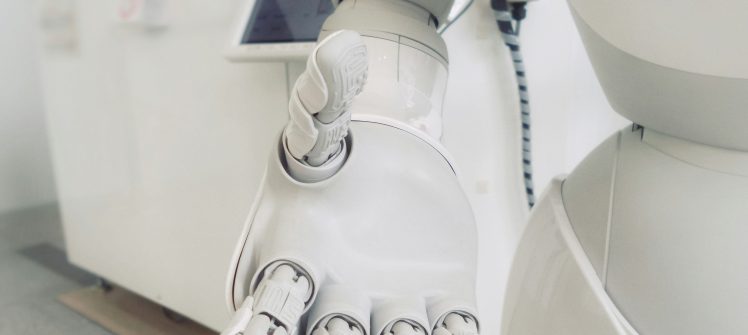Are AI detectors accurate? In an age where artificial intelligence plays an increasingly significant role in various fields, from education to cybersecurity, the reliability of AI detectors is a hot topic of debate.
As these tools are designed to identify and evaluate content generated by humans versus machines, it raises crucial questions about their precision and efficiency. Understanding how these detectors work, their strengths and their limitations is essential as we navigate the complex landscape of AI-generated content.
Let’s explore whether we can trust these digital watchdogs to discern authenticity in an era of rapid technological advancement.
What Are AI Detectors?
AI detectors are tools that help determine whether humans or machines create content. They use algorithms to analyze text patterns and structure. Some detectors focus on specific features, like grammar and word choice, while others evaluate larger contexts.
Users often wonder about the accuracy of these tools in identifying AI-generated content. Many businesses and educators are considering how to utilize these detectors best.
For instance, some may opt to hire a content writer to create original content, ensuring a human touch. It is important to remember that AI detectors are not infallible and can produce false positives.
How Do AI Detectors Work?
AI detectors work by using sophisticated algorithms to analyze text and identify patterns that indicate whether a human or machine created it. These algorithms look at various aspects of the content, such as sentence structure, word choice, and overall coherence.
By comparing these features against a dataset of known human and AI-written texts, detectors can make educated guesses about the origin of a piece of writing. However, the accuracy of these tools can vary, and they may not always get it right.
Sometimes, they can incorrectly label human-written content as AI-generated, which can be a significant issue, especially for businesses that want to rank on Google. Users need to understand that while these detectors can be helpful, they are not perfect.
Types of AI Detectors
Several types of AI detectors are designed with specific functions and methodologies to evaluate text authenticity. Let’s delve into the main categories of AI detectors available today.
Image Recognition
Image recognition AI detectors analyze visual content to determine its authenticity. They use algorithms to identify objects, faces, and patterns within images. These detectors are widely used in various fields, including security and social media.
For instance, they can help flag altered images or identify deepfakes. As technology improves, image recognition tools will become even more accurate and reliable in distinguishing real images from manipulated ones.
Speech Recognition
Speech recognition AI detectors convert spoken language into text. They use machine learning to understand and analyze audio signals. These detectors are commonly used in voice assistants, transcription services, and customer service applications.
The technology continues to improve, making it easier for machines to accurately capture human speech. However, background noise and accents can still pose challenges, affecting their performance and reliability.
Natural Language Processing
Natural Language Processing (NLP) is a crucial type of AI detector. It focuses on understanding and interpreting human language. NLP tools analyze text to find patterns and meaning.
They play an important role in filtering out AI-generated content. As the technology advances, NLP will likely become better at distinguishing between human and machine writing.
Object Detection
Object detection AI detectors are designed to identify and classify objects within images or videos. They use machine learning algorithms to analyze visual data and pinpoint various elements like people, cars, or animals. This technology is widely used in fields like autonomous driving, surveillance, and mobile applications.
Object detection can enhance safety and efficiency in many sectors by improving accuracy. As advancements continue, these detectors will create even more opportunities for innovation and automation.
Facial Recognition
Facial recognition AI detectors identify and verify individuals based on their facial features. They analyze specific markers, such as the distance between the eyes and the shape of the jawline. This technology is widely used in security systems and social media applications.
While it has improved significantly, facial recognition still faces challenges with accuracy, especially in diverse populations. As developers enhance these tools, their applications and reliability will likely expand in various fields.
Advantages of AI Detectors
The use of AI detectors has several advantages in today’s tech-driven world. They can help save time, improve efficiency, and reduce the risk of fraud or manipulation. Some specific benefits include:
Speed and Efficiency
AI detectors can process large amounts of text quickly. This speed allows businesses and educators to evaluate content efficiently. By automating the detection process, these tools help save time that would otherwise be spent manually checking work. Ultimately, the efficiency of AI detectors enhances productivity across various sectors.
Accuracy
Many users are concerned about AI detectors’ accuracy. While these tools can provide quick assessments, they are not always reliable. Some detectors may misidentify human-written content as machine-generated, leading to misunderstandings. Users should remain aware of these potential inaccuracies and consider using multiple tools for better results.
Cost-effectiveness
AI detectors can be a cost-effective solution for businesses and educational institutions. By automating content evaluation, these tools can significantly reduce the need for human resources, allowing organizations to allocate their budget more efficiently.
Limitations of AI Detectors
While there are many benefits to using AI detectors, there are also limitations that users should be aware of. These limitations include:
Training Bias
Training bias can significantly impact the effectiveness of AI detectors. If the data used to train these detectors is not diverse or representative, the algorithms may perform poorly. This limitation can result in certain writing styles or topics being misidentified. Users should be aware of this bias when interpreting the results from AI detectors, as it may affect their accuracy and reliability.
Limited Contextual Understanding
AI detectors often struggle with understanding the context in which words are used. This limitation can lead to inaccuracies when distinguishing between human and AI-generated content. Without grasping the full meaning, detectors may misinterpret phrases or sentences. Users should consider this when using these tools, as context plays a vital role in communication.
Vulnerability to Adversarial Attacks
AI detectors can be susceptible to adversarial attacks, where individuals deliberately manipulate content to deceive the detection tools. This can involve altering text or adding random elements that confuse the algorithms. As a result, the detectors might incorrectly classify human-written content as AI-generated.
Navigating the Accuracy of AI Detectors: A Double-Edged Sword
AI detectors play a crucial role in our technology-driven world. They offer benefits like speed and cost savings, but there are also important limitations to consider. Users must be aware of potential inaccuracies and biases.
As these tools continue to evolve, understanding their strengths and weaknesses will help in making better decisions about their use. It is essential to balance trust in technology with careful consideration of its limitations. Book an appointment with us to hire a content writer to get started.




Comments are closed.